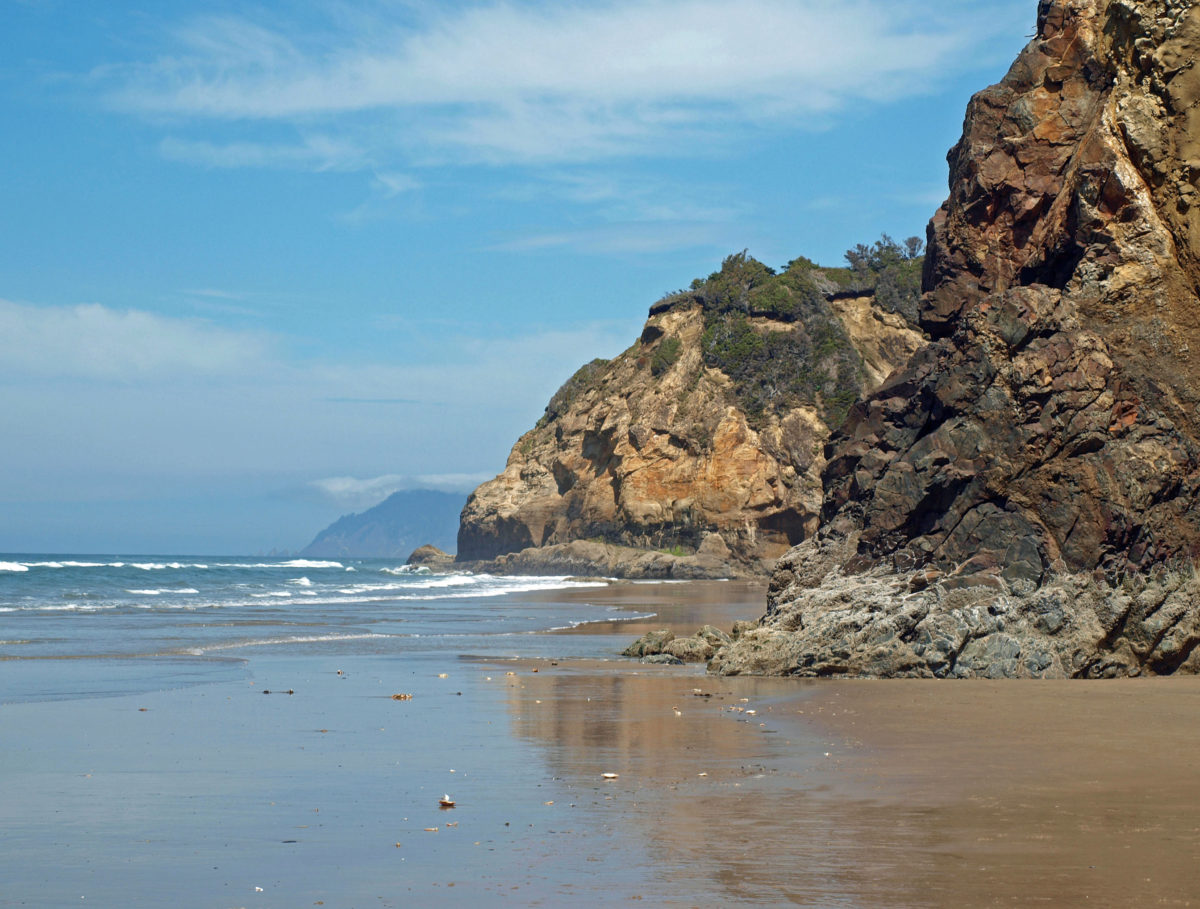Hug Point State Park
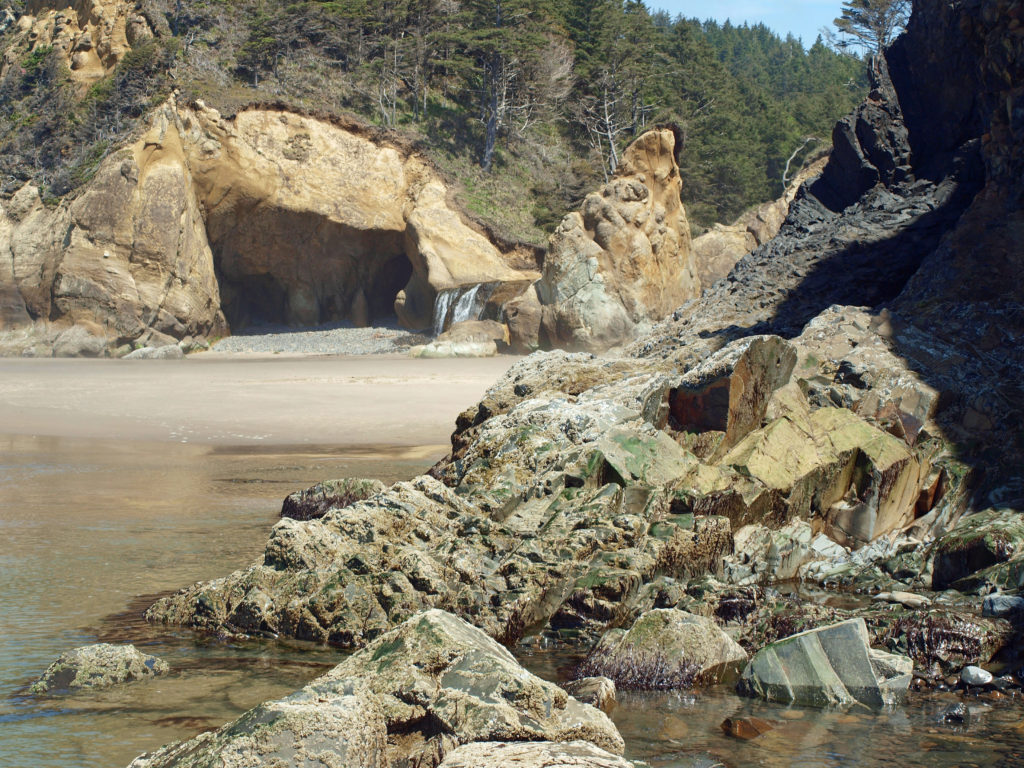
Located near the coastal town of Cannon Beach, Oregon, Hug Point’s unique blend of beaches, tide pools, interesting and unusual rock formations, caves, and waterfall make it one my favorite spots on the coast. The headland also blocks the prevailing northwest wind in the summer, so it’s often quite pleasant there when more exposed beaches are uncomfortably cold.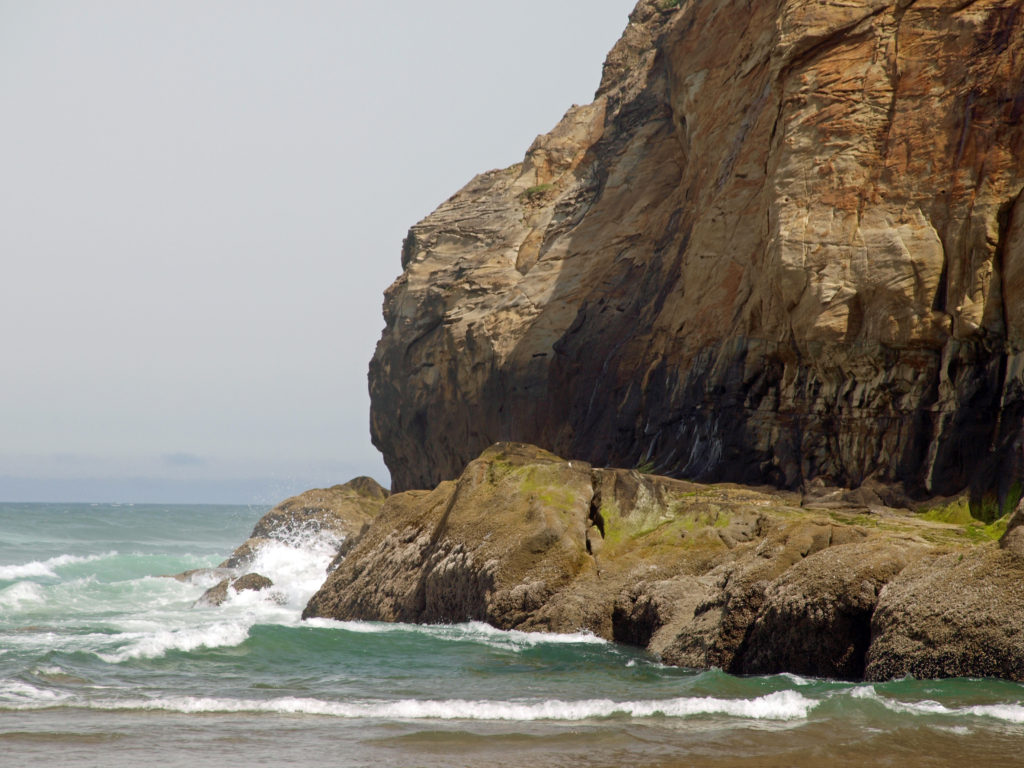
Besides being one of the nicer and more interesting beaches on the Oregon coast, Hug Point also played an interesting role in securing Oregon’s beaches as public property more than a century ago. Before the coast highway (US 101) was built, the beaches were important transportation routes. In the case of the small community of Arch Cape, located about five miles south of Cannon Beach, the beach was the only route in or out of the town. And travelers had to get around Hug Point, which was difficult for horse drawn carriages and wagons. They had to “hug the point” in rounding it to keep from getting into water too deep to negotiate, even at low tide.
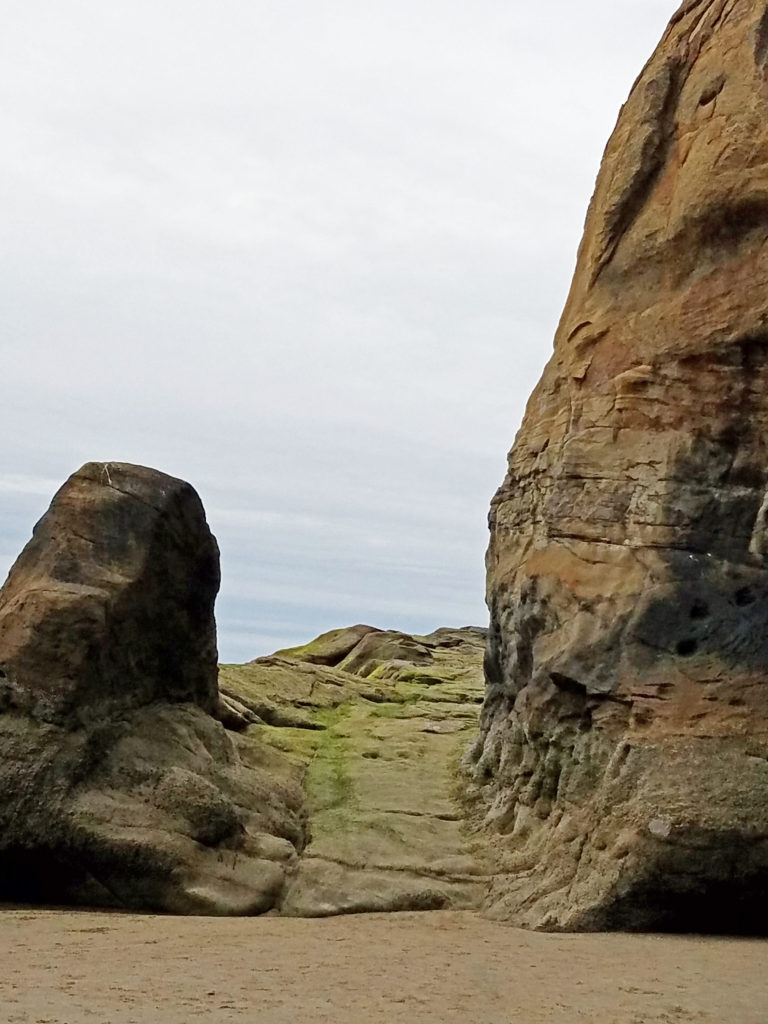
Early motor cars had even more of a problem getting around Hug Point than carriages and wagons. To make the traverse easier and safer, someone blasted a primitive roadway into the face of the headland. Legend has it that it was done by a man after he had lost his new car to the rising tide while trying to navigate around the point. But who actually built it, and when, remains unknown. There are photos of the finished roadway dating to 1915, but there are no surviving records of the roadway’s construction. 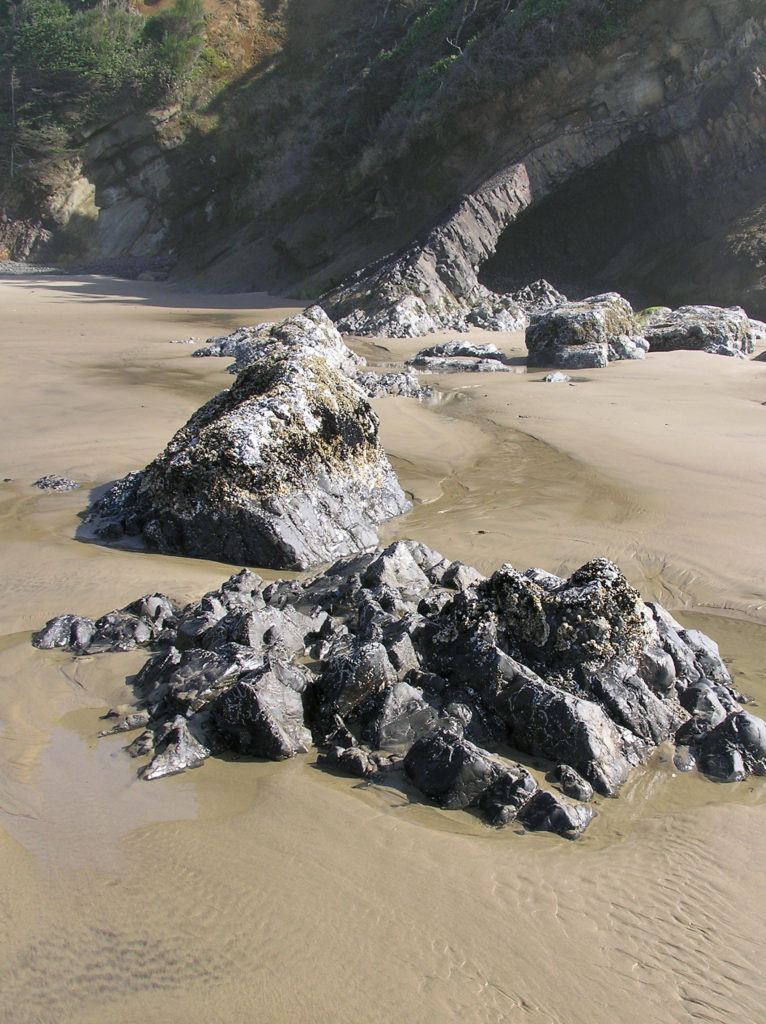
In 1911 Oswald West was elected Governor of Oregon, partly on the basis of his campaign promise to protect Oregon’s beaches from private development. The Oregon State Land Board had begun selling tidelands to private investors as early as 1874, but there was widespread opposition to that practice among the populace in the early years of the 20th century. West made the case that the beaches needed to be kept in public ownership to preserve access to coastal communities such as Arch Cape. In 1913 the state legislature agreed, passing a law making the entire coast from California to the Columbia River a state highway. To learn a little more about this often forgotten bit of Oregon history, and Hug Point’s role in it, click here. 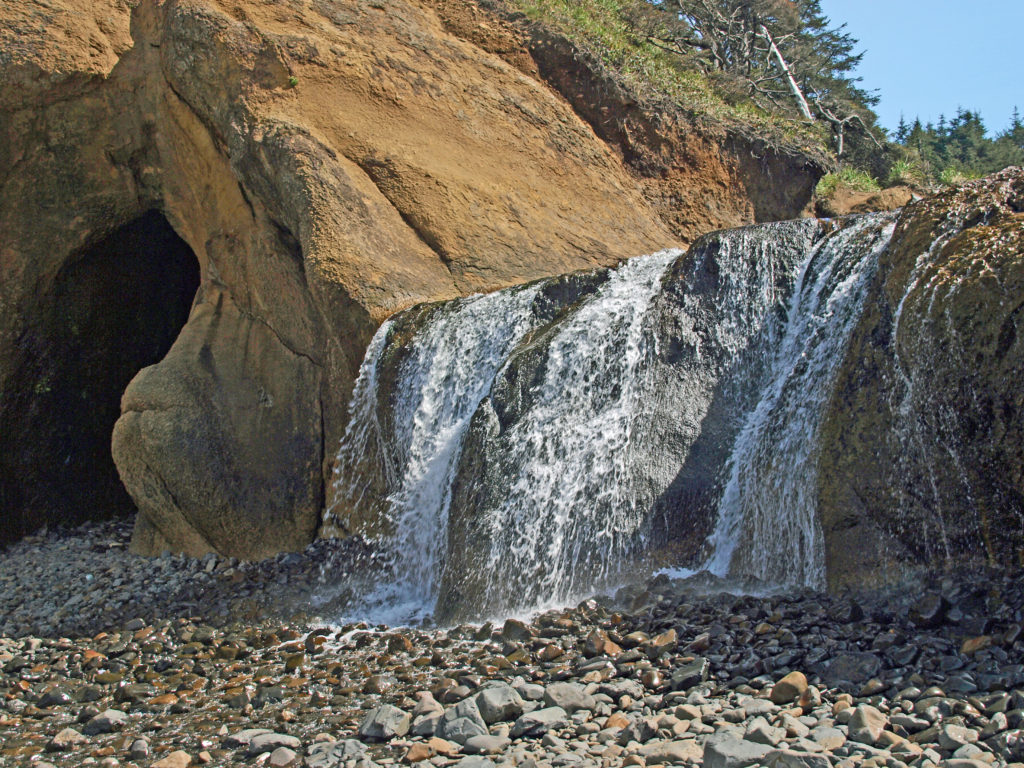
The Oregon Beach Bill , promoted heavily by then-Governor Tom McCall, further cemented public ownership of Oregon’s beaches. Passed by the state legislature in 1967, the bill made all coastal lands up to sixteen vertical feet above the low tide line property of the state, and preserved public beach access up to the vegetation line.
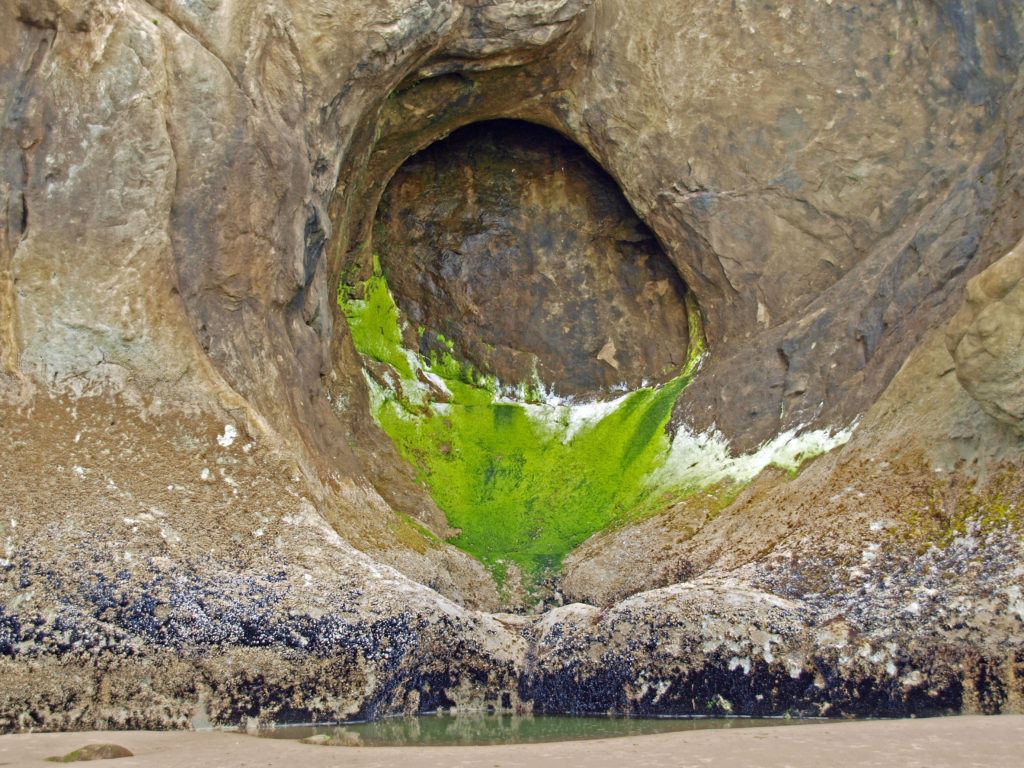
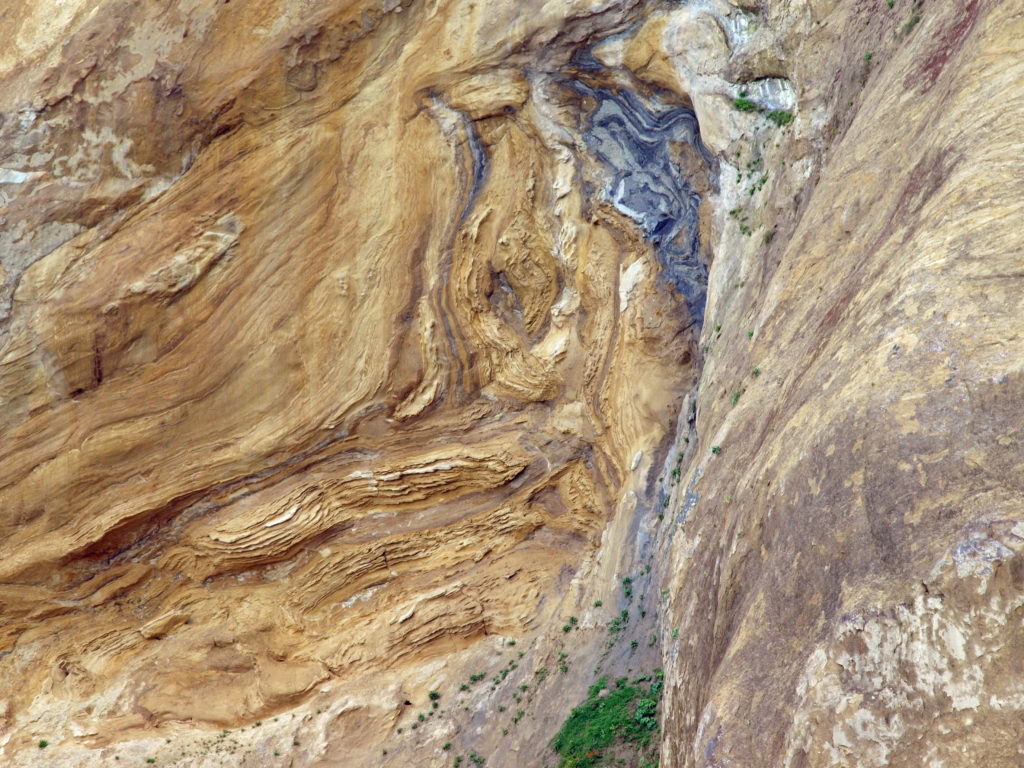 I love the eroded sandstone rock formations found at Hug Point. The layered sandstone of the point has been warped and folded by tectonic processes and eroded by wind and water into fantastic formations. The tidewater rocks are covered in green algae and seaweed, barnacles, and mussels. The rocks, sand, colorful vegetation, waves, and ever changing light make for great photo opportunities.
I love the eroded sandstone rock formations found at Hug Point. The layered sandstone of the point has been warped and folded by tectonic processes and eroded by wind and water into fantastic formations. The tidewater rocks are covered in green algae and seaweed, barnacles, and mussels. The rocks, sand, colorful vegetation, waves, and ever changing light make for great photo opportunities.
 Hug Point State Park is located about five miles south of Cannon Beach. The point can also be reached from Arcadia Beach State Park, about a mile to the north. It’s an easy day trip from the Portland area, but there many other attractions in the area, so many visitors spend a weekend or longer in the area.
Hug Point State Park is located about five miles south of Cannon Beach. The point can also be reached from Arcadia Beach State Park, about a mile to the north. It’s an easy day trip from the Portland area, but there many other attractions in the area, so many visitors spend a weekend or longer in the area.
 The nearby towns of Cannon Beach, Seaside, and Manzanita all have numerous motels, BNBs, and other accommodations, as well as many restaurants and cafes serving fresh seafood and other locally sourced foods. Astoria, located at the mouth of the Columbia River, is both the oldest European settlement and one of the most interesting towns in the Pacific Northwest.
The nearby towns of Cannon Beach, Seaside, and Manzanita all have numerous motels, BNBs, and other accommodations, as well as many restaurants and cafes serving fresh seafood and other locally sourced foods. Astoria, located at the mouth of the Columbia River, is both the oldest European settlement and one of the most interesting towns in the Pacific Northwest.

The nearest campgrounds are at Nehalem Bay State Park, about ten miles south of Hug Point, and Fort Stevens State Park, about 25 miles to the north. There are also numerous RV parks all up and down the northern Oregon coast.
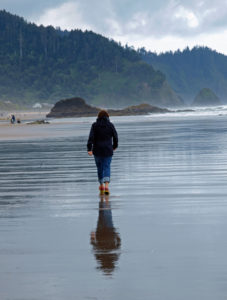
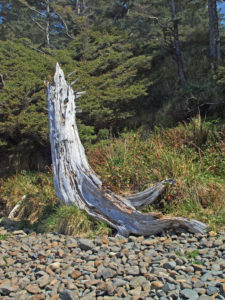
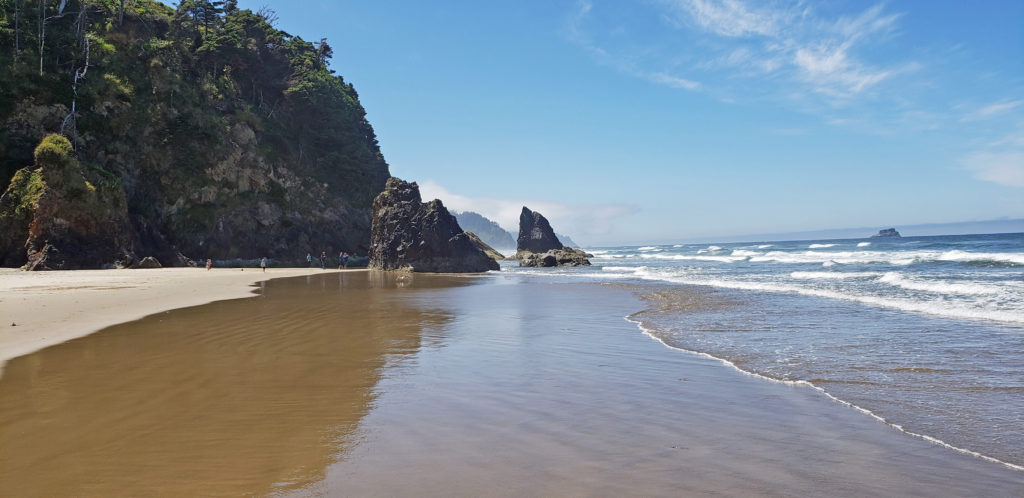
Hug Point is one of the nicest beaches on the northern Oregon coast, especially for families, and because of that it can be quite crowded in the summer, even during the week. But if you’re looking for a quiet beach where you can find some solitude, you can sometimes find Hug Point nearly deserted on week days after Labor Day. And Fall offers some of the best weather on the coast. Winter days are frequently wet and windy, but those days have an appeal of their own, and some of my best memories of the coast are from stormy winter days where I had the beach entirely to myself.
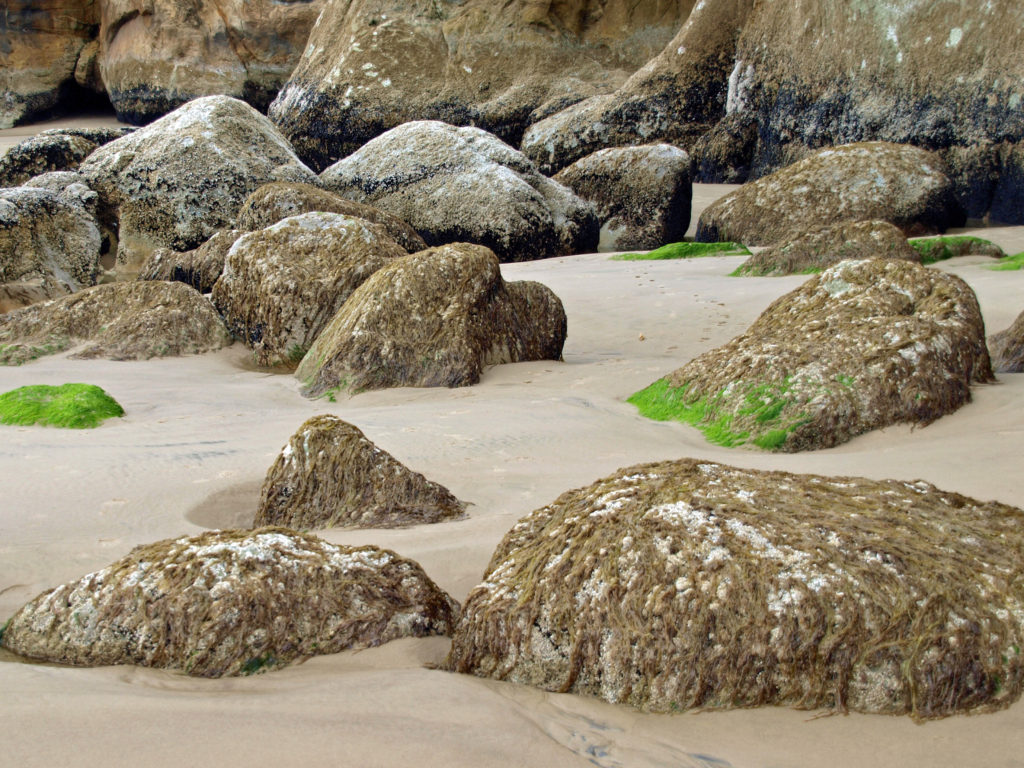 One note of caution, though. If you go, pay attention to the tides. The waterfall and caves that draw most of the visitors to Hug Point State Park are nestled between Adair Point, immediately north of the beach access, and Hug Point itself. At high tide it can be difficult or impossible to get around these two points, so it is possible to get trapped between them.
One note of caution, though. If you go, pay attention to the tides. The waterfall and caves that draw most of the visitors to Hug Point State Park are nestled between Adair Point, immediately north of the beach access, and Hug Point itself. At high tide it can be difficult or impossible to get around these two points, so it is possible to get trapped between them.
Originally posted January 8, 2019 by Alan K. Lee. Updated and re-posted May 10, 2021, and July 20, 2023
All photos © Alan K. Lee

